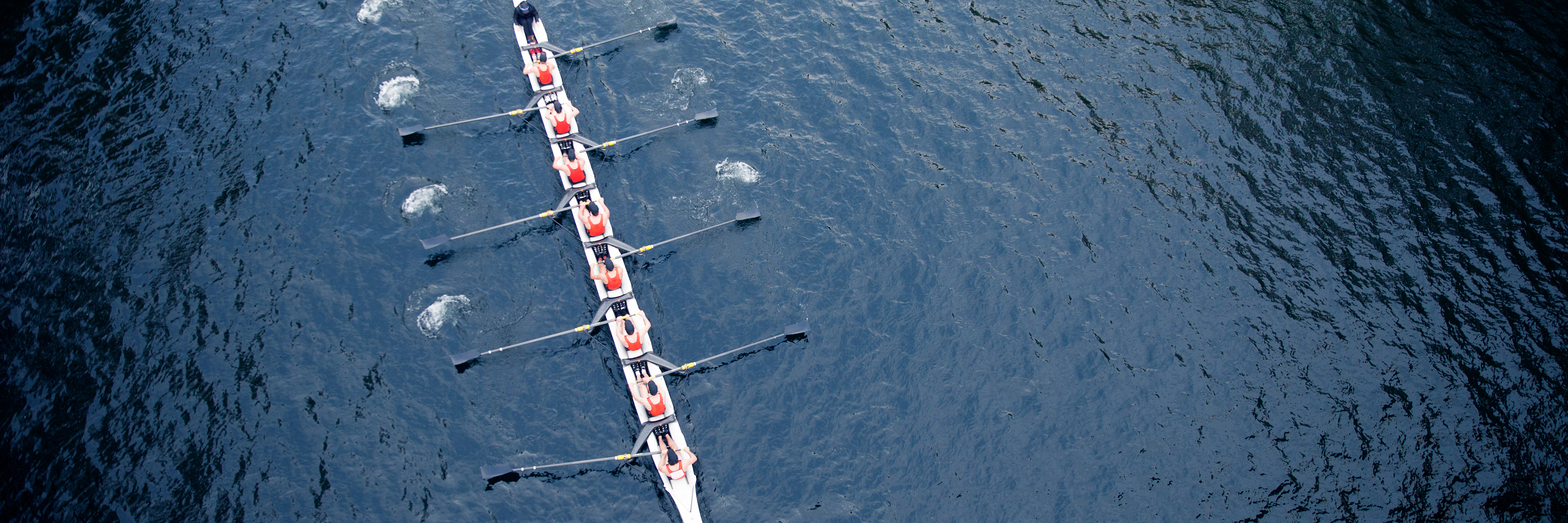The History of Rowing Techniques
How They Have Changed Over Centuries

28 July 2023
Rowing, as a sport and activity, has a rich and diverse history that spans centuries. One of the most fascinating aspects of this history is the evolution of rowing techniques. While the basic concept of using oars to propel a boat through water has remained constant, the way rowers achieve this has changed significantly. This article will delve into how these techniques have evolved over the centuries.
Ancient Rowing Techniques
Historically, rowing was primarily a means of transportation. In ancient civilisations like Egypt, Greece, and Rome, large galley ships powered by rowers were common. The rowing technique used was largely determined by the design of these vessels. Rowers often sat in tiers, pulling their oars in unison to propel the ship. This form of rowing required strength and coordination but lacked the sophistication of modern techniques.
The Emergence of Modern Rowing Techniques
Modern rowing, as we understand it today, began to take shape in the 18th and 19th centuries. With the rise of rowing as a competitive sport, particularly in the UK and the USA, a greater emphasis was placed on efficiency and speed.
Two main styles emerged during this period: the "English" or "Orthodox" style, and the "American" or "Conibear" style. The English style involved rowers keeping their back straight, using mainly their arms and lower body to pull the oar. The American style, developed by rowing coach Hiram Conibear, incorporated a more significant 'body swing,' using the rower's back to add power to the stroke.
Advancements in the 20th and 21st Century
In the 20th and 21st centuries, rowing techniques have continued to evolve, influenced by advances in technology and a deeper understanding of biomechanics. Coaches and athletes began to focus on maximising efficiency, reducing the risk of injury, and optimising individual and team performance.
One significant change is the increased emphasis on leg drive, with rowers pushing against the footplate to generate most of the stroke's power. Modern rowing also highlights the importance of the 'catch' (where the oar enters the water) and the ''finish' (where the oar leaves the water). These parts of the stroke are now understood to be crucial for maintaining boat speed and stability. The idea is to "catch" the water as cleanly as possible, pulling smoothly through the water, and then "finishing" the stroke efficiently to maintain the boat's momentum.
Another critical change has been the evolution from fixed seat to sliding seat rowing. The sliding seat, which allows the rower to move back and forth on a set of runners, was introduced in the mid-19th century. This development dramatically changed the dynamics of the rowing stroke, enabling rowers to utilise the larger muscle groups of the legs and core, thereby increasing power and endurance.
The Role of Technology and Science in Modern Rowing
In recent years, technology and science have played increasingly significant roles in refining rowing techniques. Biomechanical analysis, facilitated by advanced software and hardware, has provided deeper insights into the most efficient and effective rowing movements. This has led to further refinements in technique, focusing on minimising wasted energy and reducing injury risk.
Ergometers, or rowing machines, have also revolutionised training, allowing rowers to work on their technique and fitness off the water. Erg data has become a critical tool for coaches and rowers, offering detailed feedback on stroke rate, power output, and split times.
Simultaneously, advancements in boat and oar design have also impacted rowing techniques. Lighter, more streamlined boats and more efficient oar designs have allowed rowers to increase their stroke rate without sacrificing power or control.
The evolution of rowing techniques over centuries is a fascinating journey. From the large galley ships of ancient civilizations to the sleek, high-tech boats of today, the changes reflect advancements in technology, understanding of human biomechanics, and the shifting objectives of the sport. As we look to the future, it's exciting to imagine how these techniques will continue to evolve, driven by ongoing advancements in technology and an ever-deepening understanding of this compelling sport.